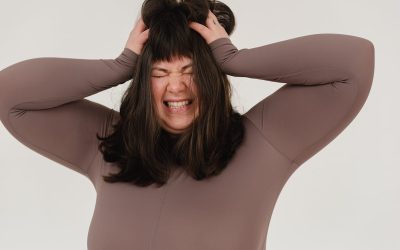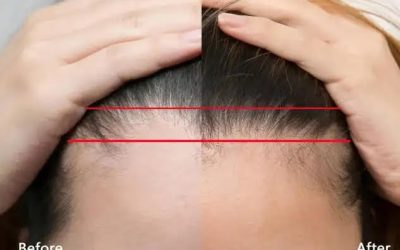Traction alopecia is a hair loss condition brought about by tight hairstyles such as ponytails, buns, braids and cornrows. Always wearing your hair in these styles can put excessive tension on your locks and result in the repeated pulling of strands from the follicles.
Traction alopecia affects people of different ages. It can be seen in children and young adults who constantly sport tight hairstyles that put a strain on the hair. However, it tends to be more noticeable as you age since prolonged pulling results in more extensive damage. Furthermore, hair tends to become more brittle as you get older.
This type of hair loss condition affects both men and women, although it is predominantly seen in the latter. In fact, in recent years, reports indicate a rise in the number of women suffering from traction alopecia. It also tends to be more common in people who constantly tie their hair up and wear extensions or wigs like celebrities, ballerinas and gymnasts.
Hairstyling is the top cause of traction alopecia. In men, buns and braids are the most common culprits. Aside from tight hairstyles, wearing extensions and other hair pieces that tug the hair may lead to traction alopecia. Using hair rollers overnight and combing too hard may also bring about this hair loss problem. Having a very long hair is another cause of this type of alopecia. Lengthy locks can be heavy, resulting in strands breaking or getting pulled out of their roots.
What Are the Symptoms of Traction Alopecia?
Hair loss because of traction alopecia is not like other conditions wherein strands fall off in clumps rapidly. Here, the hair loss takes place gradually. In fact, in most cases, the problem is only detected when it is already advanced.
During the early stage, traction alopecia manifests as pimple-like bumps on the scalp. Eventually, the presence of broken strands on affected sections may be observed. In worst cases, missing hairs on follicles or bald patches are seen. Other symptoms include scalp redness, itching and scaling. Tenderness in areas where hair thinning is present may also be felt. This is often due to inflamed follicles. Sometimes, the scalp may also have pus-filled blisters.
For this condition, hair loss or thinning is usually observed along the hairline and temples. However, it is also possible for other areas to be affected depending on the type of hairstyle you usually sport. For example, if you are always braiding your hair, you may notice your part lines widening.
What Are the Treatments for Traction Alopecia?
Fortunately, traction alopecia is a reversible condition. Simply changing your hairstyle and avoiding tying your locks tightly can resolve the problem. Minimising the use of head pieces and heating tools like blowers also prevent the hair loss from progressing into something more severe.
If you suspect that you are suffering from traction alopecia, it is wise to see a dermatologist immediately. Failure to address the problem early can lead to permanent hair loss. This is because the repeated pulling of the hair over an extended period of time can cause scarring or irreversibly destroy hair follicles.
Diagnosing traction alopecia entails scalp examination and biopsy. The latter is done to ensure that no underlying condition is causing the hair loss. Depending on the severity of the case, the dermatologist may recommend hair growth and strengthening medications. If you have scalp swelling or infections, she may prescribe antibiotics and topical steroids as well.
The prognosis for traction alopecia cases is usually good, especially if the problem is caught early. For as long as you religiously follow your doctor’s recommendations, your hair may grow back in a few months.
Are you suffering from traction alopecia? Let our trusted trichologist and dermatologist help you. Call us at (0)1 6793618.
—
Photo by martathegoodone 



